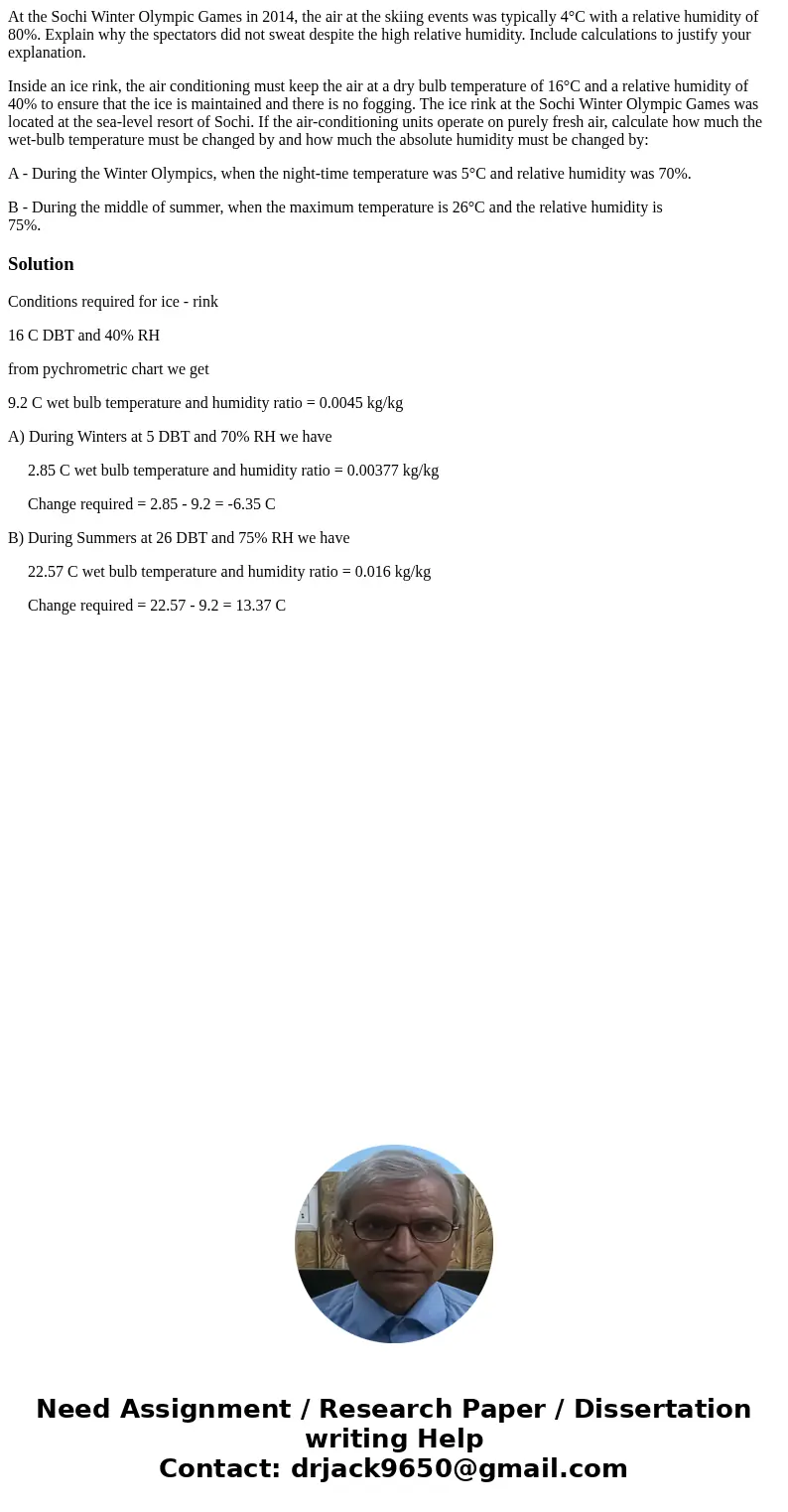At the Sochi Winter Olympic Games in 2014 the air at the ski
At the Sochi Winter Olympic Games in 2014, the air at the skiing events was typically 4°C with a relative humidity of 80%. Explain why the spectators did not sweat despite the high relative humidity. Include calculations to justify your explanation.
Inside an ice rink, the air conditioning must keep the air at a dry bulb temperature of 16°C and a relative humidity of 40% to ensure that the ice is maintained and there is no fogging. The ice rink at the Sochi Winter Olympic Games was located at the sea-level resort of Sochi. If the air-conditioning units operate on purely fresh air, calculate how much the wet-bulb temperature must be changed by and how much the absolute humidity must be changed by:
A - During the Winter Olympics, when the night-time temperature was 5°C and relative humidity was 70%.
B - During the middle of summer, when the maximum temperature is 26°C and the relative humidity is 75%.
Solution
Conditions required for ice - rink
16 C DBT and 40% RH
from pychrometric chart we get
9.2 C wet bulb temperature and humidity ratio = 0.0045 kg/kg
A) During Winters at 5 DBT and 70% RH we have
2.85 C wet bulb temperature and humidity ratio = 0.00377 kg/kg
Change required = 2.85 - 9.2 = -6.35 C
B) During Summers at 26 DBT and 75% RH we have
22.57 C wet bulb temperature and humidity ratio = 0.016 kg/kg
Change required = 22.57 - 9.2 = 13.37 C

 Homework Sourse
Homework Sourse